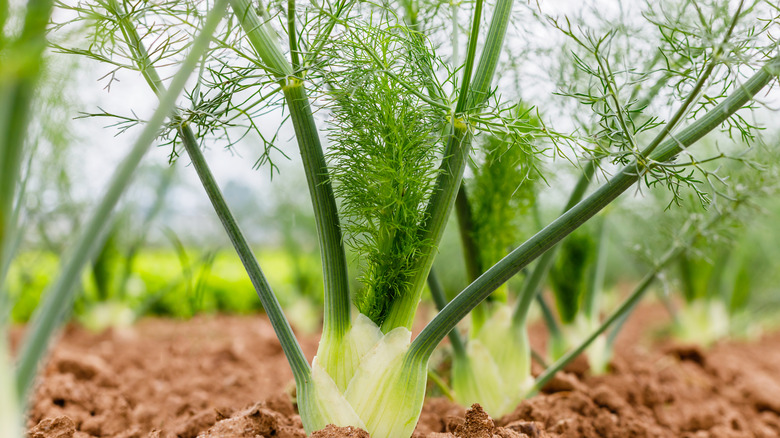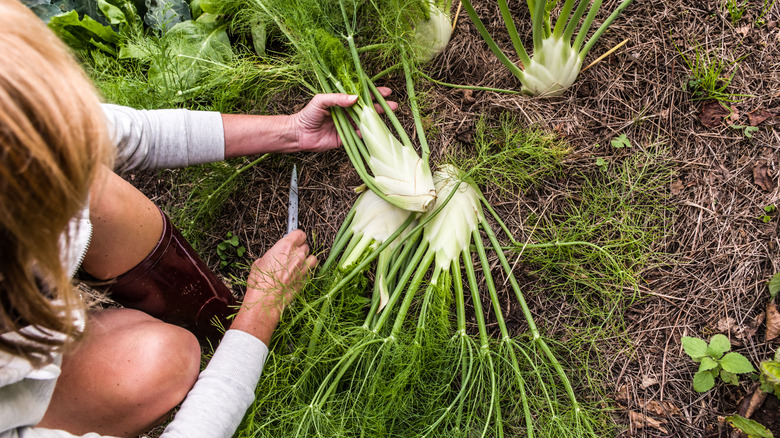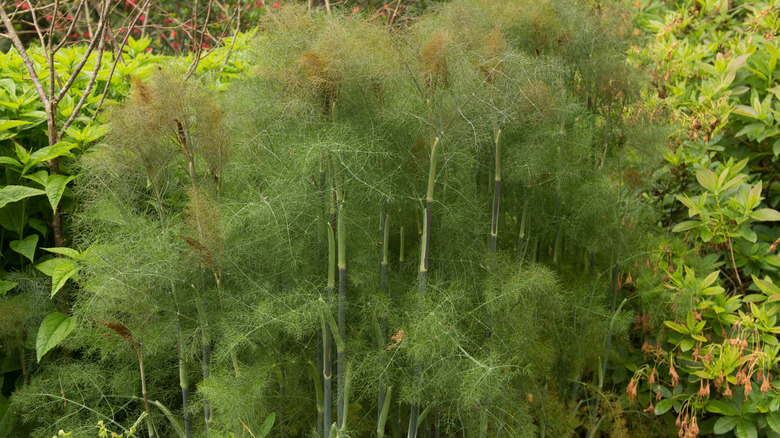Growing Fennel Is A Great Alternative To Ornamental Grass (With One Major Benefit)
Filling up a garden entirely with flowers can be expensive and time-consuming, as well as a poor way to encourage plant diversity. It's best to have a variety of plants in your garden, such as a few annual flowers, perennial flowers, shrubs, trees, and ornamental grasses. Most ornamental grasses are great for filling empty spaces and providing a unique texture, but you may want to think twice before planting fountain grass in a small garden bed or yard. Some ornamental grasses can also be invasive, spreading quickly in unwanted areas through self-sowing or running root systems, and they don't provide many benefits outside of their fancy appearance.
If you're looking for a low-maintenance plant that adds some fullness and texture to your garden bed while serving double-duty as an edible plant, the humble fennel plant could be a perfect fit for you. Fennel is a hardy and lush-looking herb that can be grown in the garden to fill in empty space. It can also be added to your plate for a fresh and unique flavor kick. While humans love fennel, it may also repel some unwanted guests from your garden. Here's what you need to know about fennel and how you can grow this fragrant herb as a brilliant alternative to ornamental grass.
Fennel is an all-around garden champion
Native to Europe, fennel is a plant in the Apiaceae family, closely related to carrots, cumin, dill, and parsley. Unlike some ornamental grasses, Fennel is a perennial that will likely return every year in USDA zones 4 through 9 but can also be treated like an annual in colder areas. Fennel grows with long, green stalks emerging from a pale bulb-like base. The plant can grow up to 6 feet tall, with thin, soft, and feathery leaves resembling dill. If fennel comes back after a year, it will produce tight yellow flowers that pollinators love. Bronze or copper fennel varieties can be a fun choice for ornamental gardens to add a little color.
Most types of ornamental grass are just that: ornamental. But all parts of the fennel plant are actually edible! The seeds are often used to flavor Italian sausage, the leaves are used as an herb, and the bulb of some varieties can be eaten as a vegetable. Fennel contains several healthy vitamins and antioxidants, as well as a compound called anethole that gives it a unique and sweet peppery flavor similar to star anise or licorice. While fennel is attractive to humans and many pollinators, this powerful herb has hidden mosquito-repelling properties. When applied to the skin, fennel oil can repel up to 88.6% of mosquitoes immediately and about 47.4% of mosquitoes after two hours, according to a study published in the Journal of Parasitology Research.
Growing fennel as a garden ornamental
For such a wide range of benefits, fennel is also relatively easy to grow. The best time of year to plant fennel is in late spring or early summer. Fennel can be grown in containers, but a deep taproot tends to make it more compatible with in-ground gardening or raised garden beds. Common fennel is a good choice for gardens with less fertile soil, while Florence fennel will thrive in rich, moist soil. Ensure your fennel gets at least six hours of full sunlight every day and water regularly until the plant becomes established and drought-tolerant. When growing fennel as an alternative to ornamental grass, regularly applying water-soluble plant food can encourage the ideal full and fluffy leaf production. The fine, soft texture of fennel looks amazing when grown near plants with thicker, broader leaves to provide some contrast.
While it's a simple plant to grow, fennel requires a little planning because it can be picky about its garden neighbors. Generally, it will be a good companion plant with herbs like anise and cilantro and most flowering plants like marigold and nasturtium. You'll want to avoid planting fennel near your cucumbers, beans, legumes, tomatoes, and other nightshades because it has allelopathic qualities that can stunt their growth. If you decide to harvest your fennel in the fall, cut through the bulb's base to encourage resprouting from the roots.



